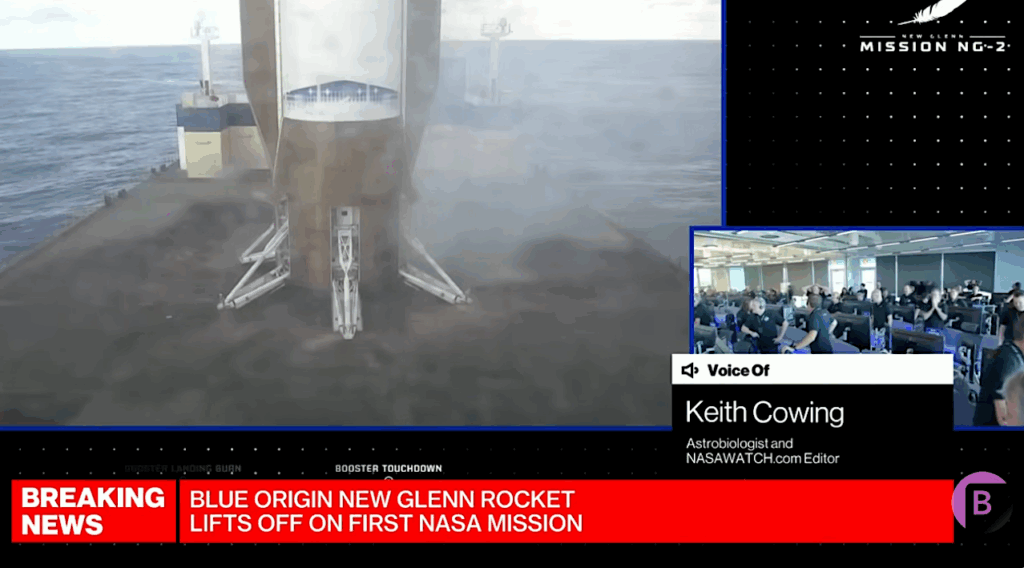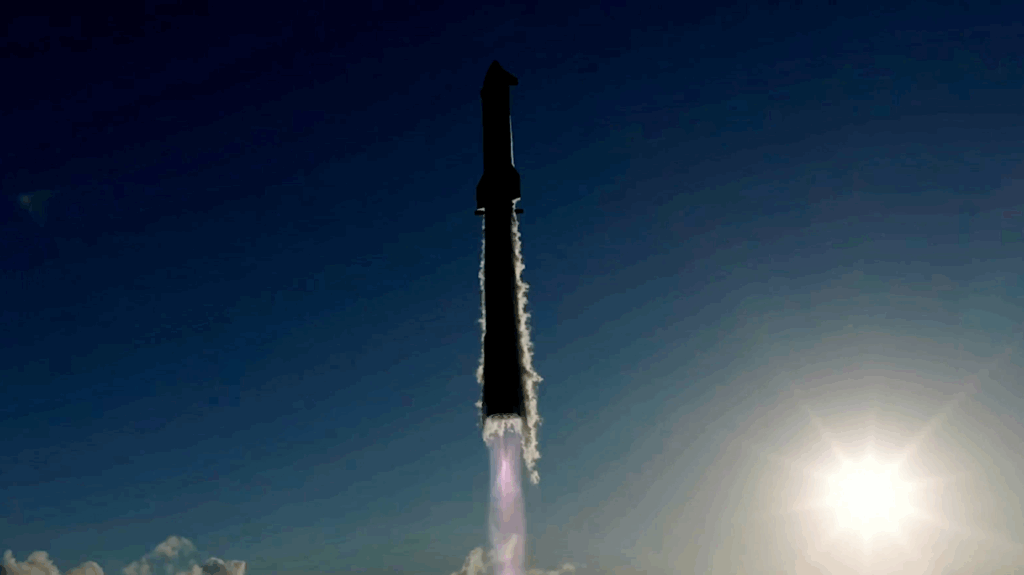BoeingLockheedMartin Spokesmouth Bashes OIG SLS Report
FYI @BoeingSpace Saturn V contracts awarded 1961/62. First flight Nov 1967. Moon landing Jul 1969. 13 flights between 69-73. Maybe you can compare this to @NASA_SLS progress in your #PoliticoSpace PR thing. Not bad for "rickety metal buckets", eh @BKingDC ? pic.twitter.com/Eo1LbURX6s
— NASA Watch (@NASAWatch) October 12, 2018
Inspector General Attack On NASA Super-Rocket Marred By Mistakes, Omissions, Loren Thompson, Lexington Institute
“I have read the audit through twice and talked to Boeing executives about its findings. It appears to be a political document engineered by a holdover appointee from the Obama administration — the same administration that tried to kill all of NASA’s human exploration programs. It omits important information, misstates key facts and isn’t even internally consistent in its assertions. … First, the audit fails to provide historical context that might help explain why problems have occurred. This is only the second time in history that any country has tried to develop such a powerful rocket. The first time was the Saturn V program for Apollo missions to the Moon, half a century ago. With the demise of the Space Shuttle program, key skills were lost, infrastructure aged and the supply chain atrophied. NASA understood there were major challenges ahead, but the Inspector General is mum on their impact.”
 Keith’s note: The core thrust of Thompson’s paid whining is either Blame Obama or its so hard to build a big rocket (even though companies that Boeing bought did it half a century ago).
Keith’s note: The core thrust of Thompson’s paid whining is either Blame Obama or its so hard to build a big rocket (even though companies that Boeing bought did it half a century ago).









Er, ‘the second time in history that any country has tried to develop such a powerful rocket…’ would have come as a surprise to the Soviet engineers who designed, built and flew their N-1 Moon rocket in the late 1960s/early 1970s. And, it failed. So, historically, half of all flown giant rocket designs to date have been monumental failures and a complete waste of time…
Maybe what they did with Saturn is build up a strong infrastructure like they did with Manhattan Project to deal with unexpected problems. Yes, I’m both had their share of engineers and technicians doing lot of make-work. After first flight of Saturn V revealing pogo problem (and probably a lot of other issues), a tower with a water tank was quickly built for analysis. Nowadays just to do that would require lots more justification for additional spending and additional paperwork to bring in outside help. Korolev constantly battled Politburu for funds, and his deputy Mishin following in his footsteps probably encountered even more difficulty.
Not to mention Energia. And SLS was meant to be derived from STS…
You couldn’t build the water tower without an environmental assessment under NEPA.
Once BFR/BFS fly they’re going to need a new narrative.
You forget about the massive manrated super-heavy Energia all-liquid booster that took the Soviet Buran shuttle to orbit exactly once c. 1989. It worked fine. Flew twice. Think four strap-on Zenit kerosene boosters on a huge LOX/hydrogen core stage. Slightly less thrust than the Space Shuttle stack… roughly 6.6 million lbs when lit. It would still be useful today, but much of it was produced in the Ukraine before the Soviet Union fell apart.
So, Musk puts the BFR/S dev at $5B
Which is close to the SLS’s cost overrun ?
Trying to justify this should get all involved a vacation from bidding on new contracts.
Loren Thompson? Is the flack of flacks?
Good that Loren Thompson wrote about the key skills and aging infrastructure though many people don’t get it. I see the Saturn V and think of Boeing, Lockmart are completely different companies than what they were. And also several machine shops scattered about the country (but Orange Co., Calif sure had several) that built various parts. And those that worked for the big and small companies are all gone. But then they had to start from someplace to get experience (probably from bad judgement of all those early rockets that regularly exploded at The Cape back in the days).
It’s fair to say the loss of key skills and infrastructure for a truly heavy lift launch vehicle made developing SLS more difficult. But those skills and that infrastructure were also unavailable to the people who developed the Saturn V (because they hadn’t existed previously, not because they had been lost.) That means the two projects started with the same disadvantage; it’s not a valid excuse for why SLS looks bad in comparison.
Actually the engineers then had another advantage, they had to use slide rules and drafting tables. It gave them time to think and visualize what they were doing so they were able to work faster. Now they have computers and CAD programs that really seem to slow down the design and development of launch vehicles ?
Now Professor that is about the silliest argument I’ve heard! 🙂
Are you saying that using a computer to draw slows down the process?
My generation learned how to draw by hand but went to computers after graduation- we were right on the ‘cusp’, as they say, which gives me the advantage of being able to compare.
I don’t think there’s any comparison. Computers are faster and yield a better product. I’m not talking about the creative stuff. It’s just that most projects have so much paperwork drudgery, and that’s where computers excel.
I’m quite happy to let computers do most of the work, but the can get out of hand. For drawing, sometimes I want a quick sketch, and simply because the CPU power for powerful software packages is available, that’s what you get. There are some ways to do a quick sketch in PowerPoint, but usually not for the sorts of things I need (Office is, in general, geared to typical rather than atypical applications.) The next step up is overkill. Sometimes I actually end sketching something by hand on a whiteboard and then taking a picture of it with my smartphone.
In terms of the engineering and physics, there is a great deal of intuition that gets lost when you resort to computers. Even if it isn’t as accurate, and leaves things out, slogging through the math and the equations (the old fashioned way) can give people quite a bit of insight into the problems. But if you can throw the full problem at a computer, and simulate the results, people tend to do so. As a result, I don’t think they develop the same sort of intuition.
If a spacecraft reenters at a 20% lower speed, and all other things equal, how much lower is the heating. Knowing the equation and about 20 seconds of work tells me it’s 49% lower. And if you want to know the answer for 10% lower speed, it would take another 20 seconds. Working out, or looking up, the equation might take half an hour. Once. Throwing the same problem at a computational fluid dynamics model would take a specialist and the right code, he’d probably need half an hour to set up each calculation. He would find out it’s actually something like 44.3% not 49% lower, since everything else isn’t equal. But he’d also have spend another half hour for the 10% slower case.
Yes, doing it without a computer gives you a good sense of what is involved which is missing when you just put numbers into a model. It is why I also wonder sometimes if the predictions of doom from a Carrington Event might be true.
Actually, I’d say modeling of the Carrington Event, or a study I once saw where someone fed the Chicxulub impact into a global climate model, are a problem for a different reason. Those results are almost certainly off, because the models make assumptions. They have to (due to Gödel’s incompleteness theorem.) Those assumptions are basically tuned to match observations, and are only reliable for conditions relatively similar to those of the observations.
A magnetic storm with a Dst of -1750 nT (don’t worry about what that index means; anything under -250 nT is considered a very intense storm) is something the global simulations probably can’t cope with. Similarly the climate models can fold in a major, explosive volcanic eruption reasonably well, but the impact of a 15 km asteroid is a little bit out of their validated regime.
That’s not a lack of the intuition you get from analytic theory. That intuition is also based on experience and extreme events are outside most people range of experiences. It’s more a concern I have for the big, complicated, numerical models, and especially the ones written by many people or used by people who didn’t develop them.
You don’t want to push a model beyond its valid limits or feed in conditions it wasn’t really intended to handle. But these days, almost anyone can download one of those models and just turn the crank. (And I mean that literally; some of them are public domain and can run on a $5000 computer, which makes them as available to hobbyists as medium to high end amateur astronomy.) People can and have gotten some very dubious results from models by turning the crank without knowing what’s inside the box.
I’ve never found computers to excel in conceptual work over a roll of “bumwad” and a sharpie.
I don’t think it is possible any longer to truly assess the advantage a computer offers, or not. So much of my work and/or work assignments are made with computer use in mind.
But then how do you explain why they were able to design, build and fly the Apollo Capsule with crew in the 1960’s in only 6 years, while the time to design, build and fly the Orion, which is only slightly bigger, is nearly 3 times as long? ?
Professor, I’ve been asking that question over and over. I have no idea.
I doubt computers have anything to do with it though. SX would be another example.
Maybe they cheat and use sliderules when no one is watching ?
I have to admit I have a sliderule app on my smartphone. But mostly as a joke. My real sliderule has a broken cursor and I’m not sure where I could get a new one…
You mean a “cursor” was once a physical object? 🙂
And “computer” used to be a job title…
That one I did actually know at least
I’m not sure I’d put it differently, but there are advantages to slide rules. Or, more correctly, disadvantages to too much computer power.
I came across one example last month, over dinner at the last OPAG meeting. A colleague was complaining about a concept study for a heliophysics mission. They had many options for the trajectory, and she was supposed to identify any which gave opportunities for additional observations and would enhance the mission’s science return.
She really wanted to explore all the permutations and combinations of all those options, but the engineers doing the trajectory analysis said that would be way too much work, and refused to provide more than a handful of examples. The problem is that it is very easy to produce what she was looking for, if you don’t care about doing it right. Specifically, if you make assumptions, simplify the problem and are willing to accept results which are only good at the 10% level. With modern computers, that’s a great way to sort through a huge trade space of options, and split the possibilities into “yes”, “no” and “maybe.” It’s also what everyone was doing when all they had were slide rules. It was all they could do.
But these days, that’s absolutely unacceptable for actually navigating a spacecraft. The accepted approach complicated, numerical calculations considering as many factors as possible and getting results that are good to better than 0.1%. Even with modern computers, that’s enough work that you can’t easily investigate a large number of options. Unfortunately, today we get people trained to “do it right” and unwilling or unfamiliar with the old, approximate approach.
Yet another example in recent weeks – as if we needed one – where Boeing is (undoubtedly) using its taxpayer-received money from SLS, ISS, etc to pay shills- such as at Lexington – to bad mouth, in this case the NASA IG, rather than to do it openly. Jim Bridenstine needs to tell them in no uncertain terms to knock it off, or else he can’t trust them to be good stewards of the people’s money.
No, Mr. Bridenstien can’t do that. Profits from a government contract belong to the contractor, and they can spend that money as they like. Even if it is on something I’d consider unethical. Government officials can’t disqualify them from future contracts because they disapprove.
On the other hand, Mr. Bridenstein is certainly allowed to make public comments on the subject. Perhaps a statement (without naming any particular company) that some Sons Of Business are going too far when it comes to slamming their competition to get government contracts. I think that would be staying on the right side of the law and congressional opinion.
Don’t forget the hit-pieces they’ve been targeting SpaceX with.
It’s very obvious they’re getting desperate.
Boeing is not a good steward of the people’s money. The prime duty of any corporation is to make money for its stockholders. If you think they are doing the best they can for the country, or for NASA, or for the taxpayer, then you are confused.
It definitely looks like they’re leaning into the “fake news” attack angle (IE blame it on Obama, act like they’re the only ones trying to develop a heavy lift vehicle and capsule since Apollo, etc). Not a good look.
Development cost and schedule aside, thirteen flights in five and a half years is averaging 2.36 flights per year. That’s a good 200% over anything planned for SLS. And, ironically, and as another SLS versus Saturn slam implies, they did all that with 1960s technology. That’s what I call progress.
Unfortunately, the cost per flight looks similar, at about a billion or so (FY19) dollars per.
Couple that with how NASA funding today compares with NASA funding in the early to mi 1960s, and the historical record would indicate that SLS is even less affordable now.
You also have to figure on how the Apollo/Saturn program was a national priority. At the time, getting Apollo off the ground and making it to the moon before the Russians was as important or even more important than some of the other political situations going on at the time. When you have have a blank check and the unwavering support of the government to accomplish a task, a lot more tends to get done.
There’s no such race going on at the moment. As much as Trump has maybe talked more about NASA, there’s no overarching national “moon or bust” mentality.
In Apollo’s final push for the Moon (October ’68 to July ’69), they actually managed five flights in 10 months.
The Soviet Energia would like a talk with you….
And the previous N1
They forget about the Energia.
SpaceX really has them running scared for their sacred $$$.
“key skills were lost, infrastructure aged and the supply chain atrophied”
On the face of it, these claims are all true. And in a vacuum these claims would be carefully considered and given much weight. In fact, to anyone not familiar with the space industry the entire discussion seems well thought out and logical. “Hey, you’re right!”
But times, as they say, have changed. That “vacuum” where only governmental operators build rockets has been filled with many capable players.
In other words, it’s simply too easy to compare the SLS efforts with, say, SX; it appears likely that Mr. Bezos’ efforts offer a similar comparison but nobody knows.
Directly comparing the capabilities of SLS, in all flavors, and F9, or FH, or BFR (“mine’s bigger than yours!”) miss the point entirely because that’s not where we can learn anything. SLS is a bruiser, for sure; on the other hand, SX built F9 from scratch including several versions of a new engine. Technical comparisons are sticky.
But no matter, because technical comparisons are entirely the wrong arena. To learn anything from the current state of affairs one looks at the softer factors. It’s the philosophy, or approach, the mentality that’s important. When SX can’t find something they just fabricate it in-house. When SLS has a similar problem they initiate a multi-month process where first the need is documented, then specs are written; vendors are vetted, and blah blah blah. Is this an overstatement? Perhaps.
All I know is this: over the course of about 8 years, SX stole the lift business by developing an entirely new bird with new engines, and they did it nearly self-financed. No whining or complaining.
Old Space is looking in the wrong spot for explanations. Old Space initiates excuse-makers, while the new kids simply light another candle.
NASA has repeatedly done its best to restrict people from using and applying the expertise they developed on earlier programs from being used in new programs. Instead they would select people from one or two groups, like astronauts or flight directors, or some of Brinkley’s, or Gerstenmaier’s or Suffredini’s people from earlier programs and give them jobs they knew absolutely zero about. Then people wondered why they did not know how to do the job. Many of us knew they did not know what they were doing. I think this has been a major downfall in a program where many of the earlier veterans were already being lost to retirement and now you had people who had expertise that were not being permitted to do the jobs they knew and people put in charge who hadn’t a clue of what was required..
But that isn’t unique to NASA. You are describing two, relatively common management practices. First, that above a certain level, promotions for engineers (and other workers) must be promotions into management. Second, the idea that a good manager does not need to be, and perhaps should not be, an expert in the technical details of the work he manages. I don’t like or agree with that, but those practices are not at all uncommon. So this doesn’t explain what seem to be problem specific to NASA and “old space”.
I suspect you are referring to placing people into top levels of management. This was happening at the lowest technical levels. People with no relevant experience being placed in charge of technical implementation. This happened in virtually every area-architecture/design, requirements definition, systems development, payload integration, commercialization……Apparently the management philosophy is throw them in and they will either figure out what to do or not.Constellation, Orion and SLS, and other human spaceflight efforts going back to ISS, in most areas they have not yet figured it out. .
Not exactly, I’m referring to a view that the manager (supervisor of the people doing the work) does not need to understand the technical implementation. I.e. that a manager’s job is about working with the people and coordinating their efforts, not being able to do their job or understand the details of their work. I suppose that view is correct to some extent, but it can (and often is) taken way too far.
Your point that “above a certain level, promotions for engineers (and other workers) must be promotions into management” is not true. While this may be the case in some organizations at NASA, I’m pretty sure it’s not the case in general.
Check with an HR type and they can pull the data… I will tell you that at one center, to remain nameless, this is often stated as fact, and it’s not. This particular center has close to 50% of all its position at GS-14 and above and among that group 50% are non-manager and non-supervisory…
We don’t even want to get into a discussion of number of SESs NASA has as compared to other agencies. Yeah, I know “we’re NASA and we know it!”
“must be” promoted into management was certainly too strong a statement. But as I understand it, the GS ratings are mostly about about pay scales, not jobs and responsibilities. Maybe we’re not thinking of the same things when we say management and promotion. I was thinking of promotions in terms of becoming someone in a position to make policy decisions about projects. I was also thinking of management in terms of supervisory responsibilities.
For example, a decision to develop a new flight computer or use a heritage one would be made by a project manager (part of whose job is to supervise the people working on the project) not an electrical or flight software engineer (no matter how senior.) The project manager might rubber stamp a senior engineer’s decision, but he also might not.
You don’t hear about it much any more but for many years NASA had a personnel planning ‘program’ in which individuals were identified long in advance to be promoted and given new and significant responsibilities and then they would try to make it appear as though positions were being competed, even though they’d long before selected who they would be promoting and it had nothing to do with expertise, experience, degrees, or previous successes; it was based much more on who you knew. Some really clueless people got put into positions in which they screwed up the organizations and programs and ultimately have threatened NASA’s human spaceflight program. The non-program we see today is the direct result.
The numbers of this type of article are multiplying like rabbits. There is an article on RedState.com that simply inverts every relationship in the interactions between Congress and individual companies involved in space launch over the last 10 years, and asserts that as the truth. Their idea is that the NASA IG should be fired because of those claims. It is becoming obvious an intimidation campaign is building.
The next 12-18 months may see a flood out of this sewer unlike anything we have yet seen. Any publication which does not know enough about spaceflight to reject such trash out of hand is open to this. Many editors who *do* know are probably being told by their CFOs to “publish it or be on the street next Monday”.
Your point is well taken, and largely true. And to those of us geeky enough to find interstate’s in deep diving space policy, the truth is clear.
But there is this: the same inversions are taking place very widely with many different policy arenas.
Consider the source . Loren Thompson is a known hatchet man for the military-aerospace-industrial cabal. He is paid outwardly to drag unfavorable views of his corporate clients as far back the other way as possible . As a former Georgetown professor, his role in the small but very loud Lexington institute in Arlington VA is to gin up and spin the verbage to torque the discourse in favor defense contractors , especially when they do not deserve praise . Whatever it takes. Whatever he can get away with in print. Lexington has been accurately described as a defense industry ” pay to play ” ad agency. His condescension towards the monumentally successful Saturn V from a half century ago in order to mask the mismanagement and gross waste of the SLS today is Exhibt A in prosecuting Lexington’s propaganda. The list of those condemnatory exhibits is long.
Pretty hard to argue with the IG when this development effort is so far behind and so over budget and when the vehicle has serious problems when it comes to meeting basic performance requirements.